What’s Wrong with White Jesus?
What did Jesus look like?
People have thought about that question for a long time. The Bible says little or nothing about the appearance of Jesus during His earthly ministry. Isaiah 53:2 is one of the few passages that makes any reference to the how the Messiah would look:
He has no form or comeliness;
And when we see Him,
There is no beauty that we should desire Him.
(Isaiah 53:2)
This passage from Isaiah really doesn’t tell us much. First of all, it is written in “prophetic poetic” style, so while it describes a real person (the Messiah, Jesus Christ) and some of the real events of His life, it describes them with some poetry.
Yet, these words tell us that there was nothing remarkable in the physical appearance of Jesus Christ, the Messiah spoken of in Isaiah 53. Jesus didn’t attract people because of His form or comeliness (an old word for an attractive appearance). There is no beauty that we should desire Him means that Jesus attracted people because of who He was, not really by how He looked. We can suppose that Jesus looked like a normal, healthy man of His place and time.
Yet in some sense, we think we know what Jesus “looked like.” So much so, that sometimes we will look at a man who has a certain kind of hair and beard and facial appearance and say, “He looks like Jesus.”
I think it’s interesting that one of the earliest depictions of Jesus – found painted on a wall in a catacomb – pictures Him as the Good Shepherd, without any beard or long hair.
Though, we must say, this was probably more an effort of the artist to say, “Jesus was and is the Good Shepherd” more than the artist trying to say, “this is what I think Jesus looked like.”
Other paintings from the catacombs seem to picture Jesus in what seems to us as a more traditional appearance.
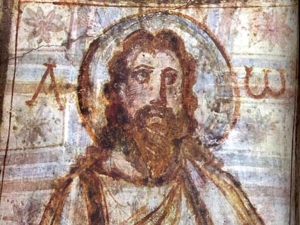
But there are other relatively early depictions of Jesus that show Jesus in a more traditional way.
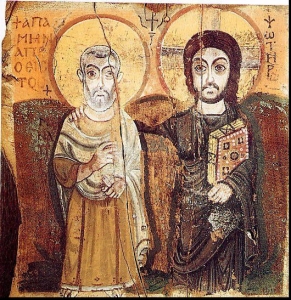
One of my favorites is the famous “Christus Pantokrator” of the magnificent Hagia Sophia of Constantinople, modern day Istanbul.
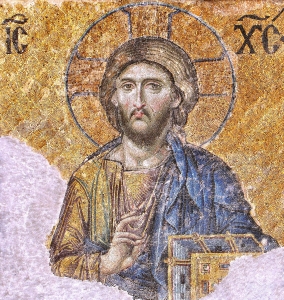
I also like the way that the Dutch painter Rembrandt displayed Jesus – there was some true artistic genius there, at least in my opinion.
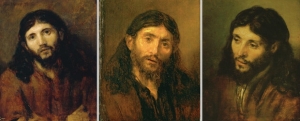
In the modern world, Jesus has been presented in all kinds of ways, including what some people call the “white Jesus.”
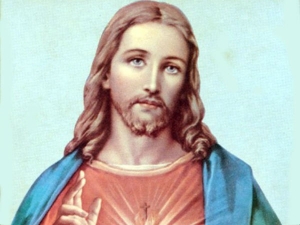
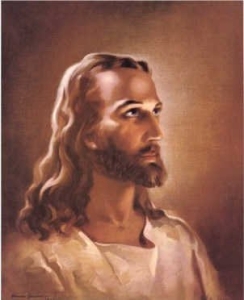
Maybe you have seen some of the pictures that portray Jesus as a person with relatively white or pale skin, and sometimes even with blue eyes.
I received something that made me think about this all over again. A few months ago, my daughter gave me a book she found in a charity shop in England. This is the book – Son of Man – and being a wonderful daughter, she knew that her dad would be interested in it. And I was interested – this book was published by the British Society for the Propagation of the Gospel in 1939. There is no author listed, but there is an introduction by Bishop Walter Carey, if I can make the name out correctly. The book is subtitled, “Pictures and Carvings by Indian, African, and Chinese Artists.”
I want to share with you some of the images from that book.
From the Africa section, here are some images: (1) A carving of Mary and the infant Jesus,
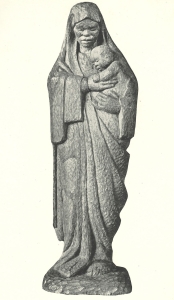
(2) A carving of Judas betraying Jesus with a kiss, and
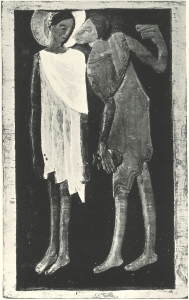
(3) a carving of Jesus on the cross.

You’ll notice in these that the Bible characters – Mary, Judas, Jesus, and those at the cross – have a distinctive African appearance. Of course, Africa is a huge continent, so we say that the character look like some of the peoples of sub-Saharan Africa.
From the India section, we see (1) a painting of Mary and the infant Jesus
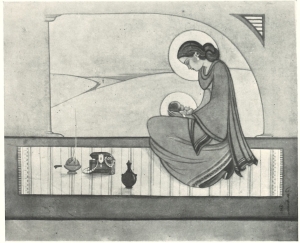
and (2) a painting of the woman who anointed with oil the feet of Jesus.

We also see a painting of Jesus with the woman at the well.
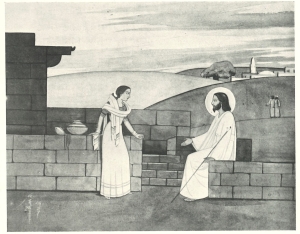
Again, in each of these the Bible characters are portrayed as if they came from some part of India – and this is also true of their depictions of Jesus.
From the China section, we see a painting of the story Jesus told about the rich man and the poor man named Lazarus,
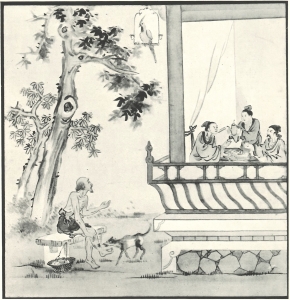
and a painting of Jesus washing Peter’s feet at the Last Supper.
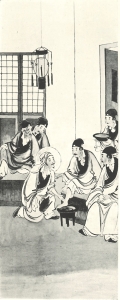
We also see a painting of Jesus and His disciples at the Last Supper.
Once more, in each of these the Bible characters – including Jesus, or maybe especially Jesus – are shown as if they are Chinese.
What was my reaction to all these pictures and carvings, depicting Jesus and Bible characters in an African, Indian, or Chinese context? Like many of you, I thought they were beautiful. They didn’t offend or stumble me in the slightest. In fact, I think the point of this little book was and is amazing – that Jesus Christ can and should be received and understood in each culture, all across the globe. After all, Jesus is – as John 4:42 says – Jesus is the Messiah, the Savior of the World.
He’s the Savior of Africa, the Savior of India, and the Savior of China – even if many people in those places don’t understand or receive that yet. And of course, Jesus Christ is the Savior of Europe and North America – there’s no other Savior for the world.
As it says in the introduction to Son of Man [paragraphs 2 and 3]:
So, what are we to make of “White Jesus”? You know, these kind of pictures?
Well, if you really think that Jesus looked like modern European or North American person, please understand that He looked like an average man of His place and time – a Jewish man of the near east about 2,000 years ago. His skin was probably something of an olive complexion and He was probably of normal size and appearance. How Jesus looked was not what set Him apart – and He certainly didn’t have a halo behind His head.
Yet, don’t be completely down on the images of “White Jesus” – in the same way that you should not be down on the images of “African Jesus,” or “Indian Jesus,” or “Chinese Jesus” – we take these depictions of Bible characters in these different cultures as a way of saying, “The Bible speaks to us in our culture. It isn’t just the book of one time and place; the Bible speaks universally.” When it comes to Jesus, it is a way of saying, “Jesus is our Savior also. We belong to Him, and in some sense, He belongs to us.” He is the “Son of Man,” the Savior of the World.
Understood in the right way, these ethnic depictions of Jesus are powerful and beautiful – including, I suppose, “White Jesus.”
One last thing: the most detailed depiction of Jesus in the Bible is found in the book of Revelation 1:13-16:
…in the midst of the seven lampstands One like the Son of Man, clothed with a garment down to the feet and girded about the chest with a golden band. His head and hair were white like wool, as white as snow, and His eyes like a flame of fire; His feet were like fine brass, as if refined in a furnace, and His voice as the sound of many waters; He had in His right hand seven stars, out of His mouth went a sharp two-edged sword, and His countenance was like the sun shining in its strength.
Obviously, that description uses a lot of powerful, poetic, symbolic imagery – but it reminds us that maybe instead of focusing so much on how Jesus looked as His first coming, maybe we should think more about how He looks now, gloriously enthroned in heaven, and how He will look at His second coming.
You can be ready for His second coming by receiving Him as He came at His first appearing – as the Son of Man, the Savior of the World, who lived and died and rose again to win rescue for His people.
© 2021 By David Guzik for Enduring Word – ewm@enduringword.com



